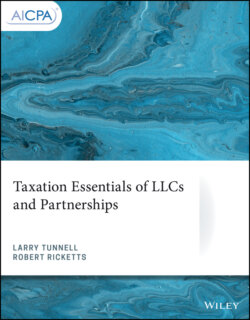Читать книгу Taxation Essentials of LLCs and Partnerships - Larry Tunnell - Страница 33
Example 1-16
ОглавлениеElaine and Jerry formed a partnership early last year to purchase rental properties. They each contributed $25,000 to the partnership, which then borrowed $150,000 on a recourse loan, and purchased rental real estate. Each partner's initial basis in the partnership interest was therefore $100,000 ($25,000 contributed plus $75,000 share of debt). In its first year, the partnership reported net income of $30,000, and made distributions to Elaine and Jerry of $8,000 each. Elaine and Jerry will each report $15,000 income on their individual returns (their shares of the partnership's $30,000 income) even though they received only $8,000 in distributions. Their bases in their partnership interests will be $107,000 at year-end ($100,000 initial basis, plus $15,000 share of partnership income, less $8,000 distribution received).
At first glance, it may seem unusual for the partner to be allowed to increase basis in the partnership interest by his or her share of nontaxable income. This basis adjustment, however, is necessary to prevent the tax-exempt income from indirectly becoming taxable when the partner later sells or otherwise disposes of his or her interest in the partnership.The tax-exempt income increases the partnership's net assets, and therefore, presumably, the value of the equity interests in the partnership. An increase in value, without a corresponding increase in basis, would cause more gain to be recognized upon a subsequent sale of the interest.
